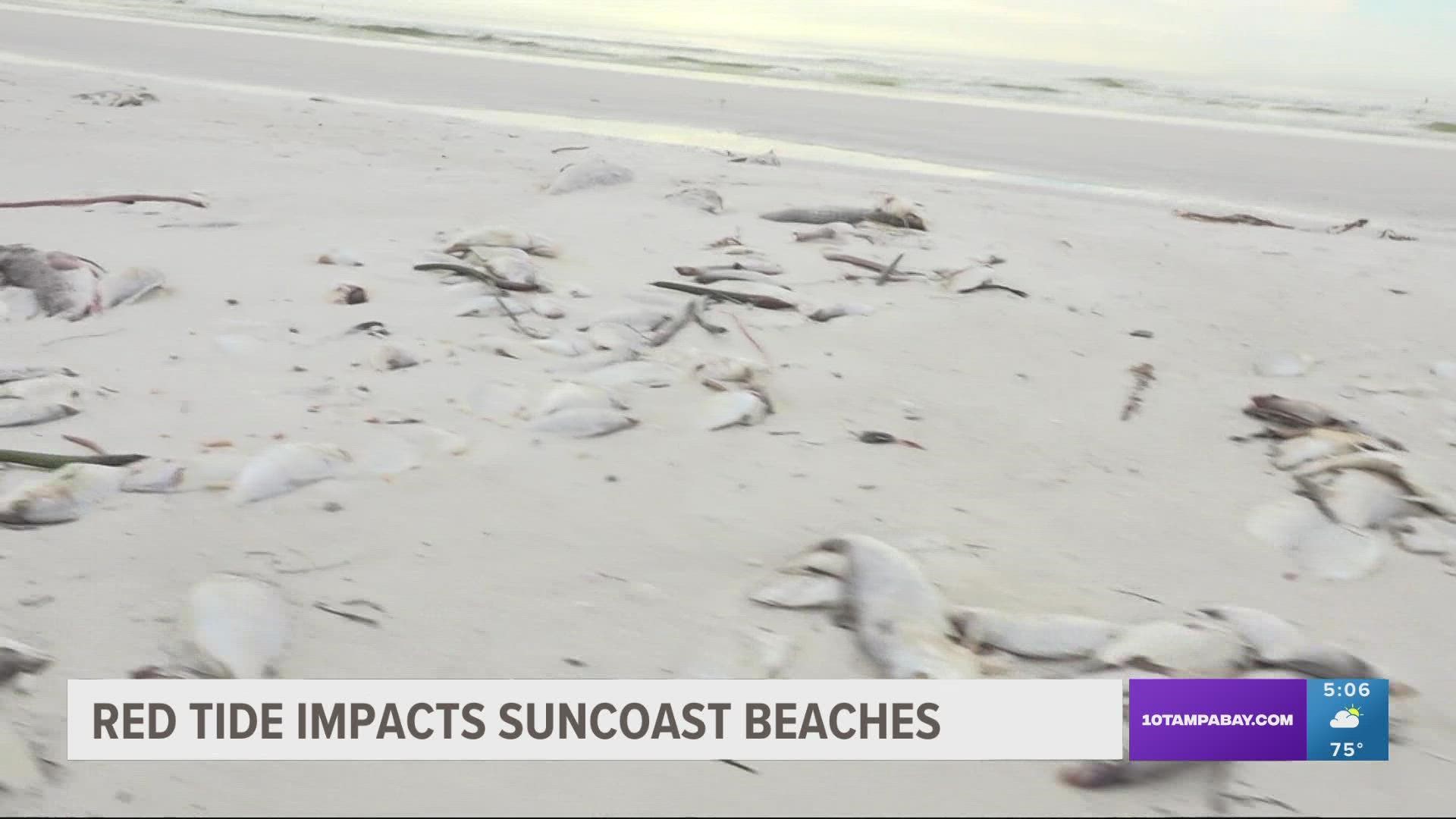SIESTA KEY, Fla. — Dead fish have washed ashore on Suncoast beaches in Sarasota and Manatee counties. Officials with the Florida Department of Health have been concerned about elevated red tide levels in waters along the Gulf Coast for weeks.
A red tide bloom offshore has continued to grow according to officials and has started killing off some marine life.
Being greeted by such an amount of dead fish remains a disturbing sight for tourists visiting our local beaches.
Many of them are experiencing red tide for the first time and it's running some of them off.
"I went to walk up to the beach and all of a sudden there were all these little dead fish so I turned around," Kelsey Knapp, a tourist from Michigan, said.
Knapp and a partner had been vacationing in the area for a few days.
"From where we are sitting it's OK, but I can see how in a few days it's going to get kind of gross," she said.
Most of the tourists have been heeding the now weeks-long red tide advisory and have stayed out of the murky waters. At Siesta Beach, people avoided the water completely and the shores were overrun by birds that were pecking at the dead fish.
"What we're seeing here is a mixture of fish that may be living in the bay or the Gulf of Mexico," Dave Tomasko, executive director of the Sarasota Bay Estuary Program, said.
Some of the other species of fish killed by the red tide included catfish, snooks and eels.
Experts said the latest satellite imagery from the National Oceanic and Atmospheric Association showed the size of the red tide map offshore to be about 50 square miles wide. They also said the level of toxins in the water at a rate 10 times higher than what it takes to kill fish.
"It kills basically all the fish that it comes into contact with pretty quickly. Like within half an hour, you can see an entire bay just turned dead," Tomasko said.
The beach is not the only place that's seeing large amounts of fish kill happening because of the red tide bloom.
Dead fish are also being spotted in canals in some neighborhoods where they are now washing into backyards.
"You can see big ones [fish], there are little ones, mostly up on my rocks," Mike Koloski of Osprey said.
Koloski said it's been hard being outside because of the toxins and now the fish kill would make backyard trips short and quick because once the rotting processes set, it would be unbearable to stay outside.
"This just all happened overnight so it hasn't started rotting and smelling yet but I'm guessing the next couple of days it's going to get worse," he said.
Conservation experts said red tide can't be stopped but feeding less nitrogen into the waterways can reduce its impact.
"If you don't like red tide, don't make it worse. We've got to do a better job with our wastewater and storm systems, wastewater infrastructure, and take better care of our mangroves, get more clams and oysters out in our bays," Tomasko said.
In the meantime, some tourists are forced to either deal with the situation or make other plans that don't involve the beach or waterways.
"We're glad this is our last day here so we won't have to experience the worst of it but we can definitely see how it can get pretty bad and cause people not to want to come to the beach," Jacob Deprez, also from Michigan, said.
Longboat Key and Bradenton Beach are also seeing dead fish washing ashore. The next red tide report comes out on Wednesday.

